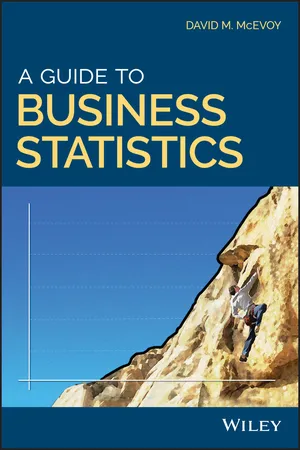
A Guide to Business Statistics
David M. McEvoy
- English
- ePUB (disponibile sull'app)
- Disponibile su iOS e Android
A Guide to Business Statistics
David M. McEvoy
Informazioni sul libro
An accessible text that explains fundamental concepts in business statistics that are often obscured by formulae and mathematical notation
A Guide to Business Statistics offers a practical approach to statistics that covers the fundamental concepts in business and economics. The book maintains the level of rigor of a more conventional textbook in business statistics but uses a more streamlined and intuitive approach. In short, A Guide to Business Statistics provides clarity to the typical statistics textbook cluttered with notation and formulae.
The author—an expert in the field—offers concise and straightforward explanations to the core principles and techniques in business statistics. The concepts are introduced through examples, and the text is designed to be accessible to readers with a variety of backgrounds. To enhance learning, most of the mathematical formulae and notation appears in technical appendices at the end of each chapter. This important resource:
- Offers a comprehensive guide to understanding business statistics targeting business and economics students and professionals
- Introduces the concepts and techniques through concise and intuitive examples
- Focuses on understanding by moving distracting formulae and mathematical notation to appendices
- Offers intuition, insights, humor, and practical advice for students of business statistics
- Features coverage of sampling techniques, descriptive statistics, probability, sampling distributions, confidence intervals, hypothesis tests, and regression
Written for undergraduate business students, business and economics majors, teachers, and practitioners, A Guide to Business Statistics offers an accessible guide to the key concepts and fundamental principles in statistics.